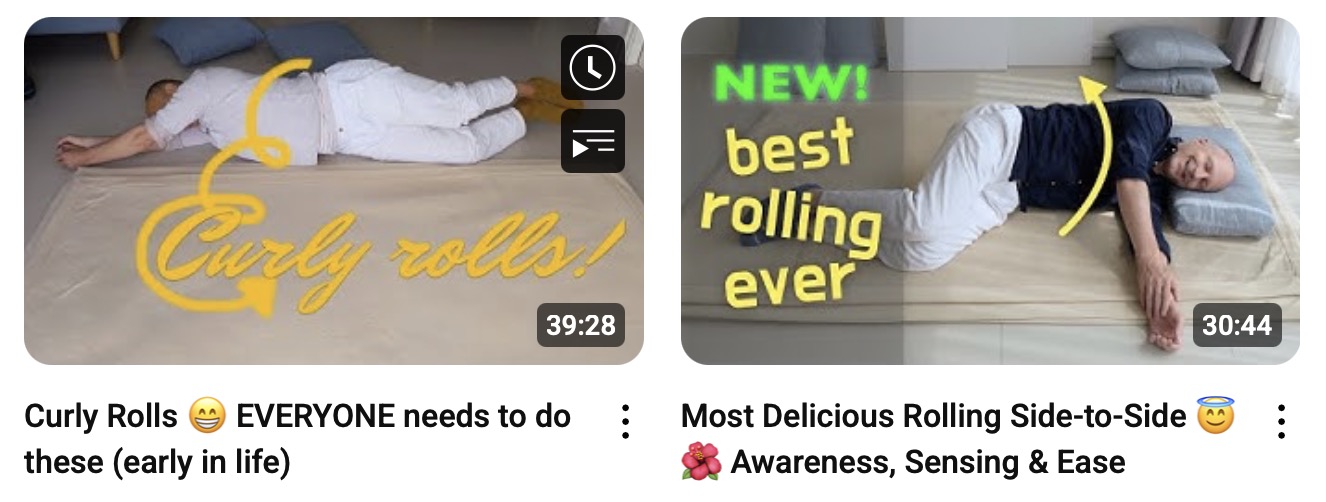Looking back, I have designed three Feldenkrais-inspired rolling lessons in the past month:

All start in side-lying, and end in rolling, the third has yet to be filmed:
- Rolling by pushing-off/pressing against the floor.
- Rolling by curling-flexing/extending — curly rolls.
- Rolling by twisting upper/lower body — twisty rolls.
The challenge is naming the first variant. “Pushy rolls” would match, the image of thrusting, pushing-off, which is biomechanically accurate… but it feels off due to the negative social connotation of “being pushy.” I explore further:
- “Pressy rolls” is softer, but the metaphor of press (printing press, olive oil press, T-Shirt press) doesn’t match the thrust-off dynamic.
- “Rooty” from “rooting” is a recognisable word and often used in Yoga, but implies sinking/planting rather than pushing off.
Then I shifted toward everyday metaphors, like using a handrail of a chair to push oneself out of a chair. When this didn’t yield any results, I asked ChatGPT for material I could use for brainstorming: Scooty, Boosty, Nudgy, Hoisty, Prop-y.
- Scoot – feels rushed.
- Boost – appears in the word booster which is politically loaded.
- Prop-y – from propel. My thesaurus said: push/move forwards, move, set in motion, get moving; the action of driving or pushing forward.
Propel seems to fit the biomechanical reality, and it avoids the connotation of being “pushy.” And, when abbreviated, it even sounds a little bit like “proper.”

In conclusion, and to conclude the brainstorming coffee shop session from this morning, the emerging trio is:
- Prop-ly rolls (propel, push-off)
- Curly rolls (flex/extend)
- Twisty rolls (rotation/spiral)
In reality, I guess, “pushy rolls” might be the one that sticks… because it’s the most easy on the tongue — duh!



